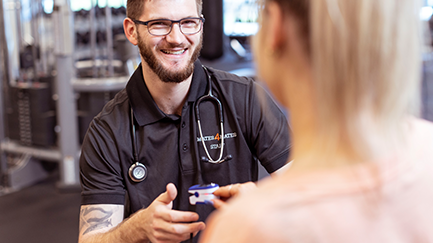When veterans transition out of the Defence Force, they can encounter many challenges, one being how their approach to fitness can change, and then keep changing as they get older.
Defence vs civilian fitness
Physical activity levels within the Defence Force differ greatly from those living a civilian lifestyle.
For current-serving members, their days are structured with high physical demands. Their training is focused on performance and being operationally ready, and they must meet minimum fitness standards.
For civilians, exercise can be structured or flexible – you choose what works for you. Goals are personal and based on your own priorities, with the main consequence of not exercising being its impact on your health and wellbeing.
When veterans begin to transition into civilian life after leaving the Defence Force, the loss of structure, loss of team camaraderie and motivation and changing priorities can lead to a reduction in overall physical activity.
Veterans may see an increase in sedentary behaviour, potential weight gain, injuries exacerbated, loss of strength, increased risk of chronic illness (e.g., heart disease, diabetes, etc.) and mental health impacts if not proactively managed.
On top of this, some veterans see asking for help and seeking support as a weakness rather than a tool to improve their wellbeing, leading to delays in addressing physical or mental health needs.
The importance exercising post-transition
Research shows that engaging in valued and effective physical activity program during and post the transition from the Defence Force promotes positive health and wellbeing outcomes for veterans.
Interestingly, further research from the US highlights that those with higher physical activity levels prior to transitioning were more likely to experience sharper declines in both physical activity and psychological wellbeing once they left service.
What this tells us is that high fitness levels during service does not automatically protect veterans from future health challenges. It’s important to keep being physically active following transition.
Early access to support and guidance, particularly just before or during transition, is critical to help veterans establish sustainable, long-term approaches to physical activity, health and wellbeing, particularly as they age.
Exercising at every stage of life
Just like how your health and wellbeing is likely to change following your transition from the Defence Force, it will keep changing as you get older.
Ageing is associated with several physiological changes (e.g., loss of muscle, changes in joints, reduced fitness and slower reaction times), cognitive changes (e.g., reduced attention and processing speed) and social changes (e.g., retirement and relationship changes) that influence how we move, what we can do and what we should prioritise.
Regular exercise can preserve strength, mobility and independence well into later years. The type of movement simply adapts:
- In your 30s and 40s: Focus often shifts to balancing work, family and fitness. Strength training and mobility work become key for maintaining muscle and preventing injuries. Building good lifting technique and consistency now sets you up for healthy ageing later.
- In your 50s and 60s: While recovery may take longer, continuing to participate in moderate to vigorous exercise, such as resistance training, is crucial for preserving muscle mass, bone density and metabolic health. Low-impact cardio like swimming or cycling can complement, not replace, moderate to vigorous exercise. Core strength and balance training further reduce fall risk and improve daily function.
- In your 70s and beyond: The goal shifts to maintaining independence, joint health and daily functionality – but moderate exercise, particularly resistance training, should still form the foundation of movement. Appropriately loaded strength training (using weights, machines or body weight) helps slow muscle loss, supports balance and keeps everyday tasks easier. Gentle walking, stretching and social activities like group classes can supplement this to support both body and mind.
Further research notes that older Australians participating in Accredited Exercise Physiologist-led exercise classes, like the ones offered at Mates4Mates, showed statistically significant improvements in physical function.
Support at Mates4Mates
The Mates4Mates physical rehabilitation team comprises of exercise physiologists and physiotherapists who are here to support veterans and their families at RSL Queensland Veteran & Family Wellbeing Centres across Queensland through one-on-one appointments and group exercise classes.
They can provide education on how to self-manage your physical health through simple and achievable principles and programs. This includes injury management and chronic disease management (e.g., diabetes, high cholesterol, hypertension, heart disease, persistent pain, etc.) as well as exercising for mental health (including PTSD).
Whether you’re transitioning out of the Defence Force or want to start moving before your next birthday, the team can help you figure out what kind of exercise, movement, sport or recreational activity you enjoy that can improve your health and wellbeing.
To find out more about how Mates4Mates can help support you, reach out to us on 1300 4 MATES (62 837) for a confidential chat.
Written by Aric Visentin, Mates4Mates Exercise Physiologist





